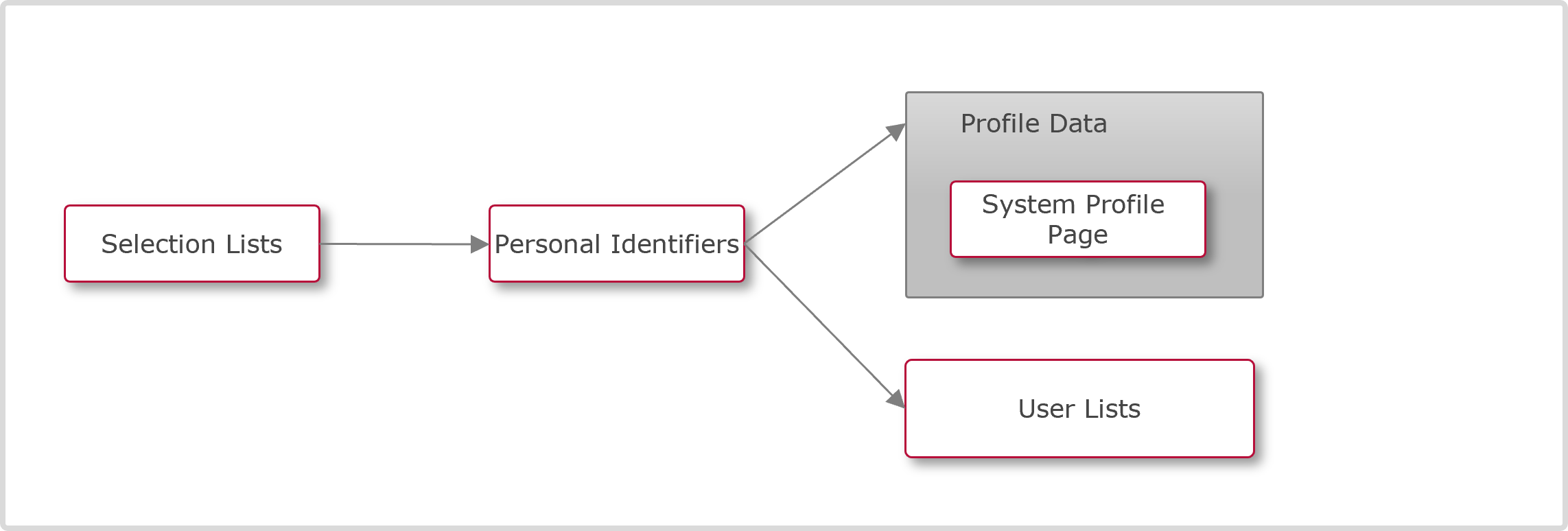User Lists
At various points in the learning platform, user lists are employed. Which user-defined search criteria are available for the user search and which spreadsheet columns are used in the search results is determined via the user lists to which the desired personal identifiers were assigned.
In some user searches, further properties that are not managed via personal identifiers, such as the online status or the search criterion "Skills", are available. They cannot be shown or hidden via user lists, but depend on the spreadsheet configuration, as it is applied to non-people searches.
Roughly, user lists are divided in user manager, adding users, tutors, administrators and moderators, and user searches from learner view.
No personal user lists can be created, but existing ones can be edited. They are linked to various points in the system. If the multi-client-context is configured different user lists can be defined for clients.
The profile in the information section of a user list is generally determined by the settings under "Profile information".

Functions of the User List Manager
New
For each user list, it can be determined which personal identifiers are to be provided as spreadsheet columns and search criteria of the advanced search. In the expanded search, any number of criteria can be added. The identifiers can be just sorted, or added or removed. For each added attribute of the expanded search, it can be determined if the attribute is to be available to users by default or if it can be added manually and, for example, can be saved in the framework of a personal search.
For each user list the following can be specified
whether the profile image for opening the public user profile is displayed in a user panel
whether a button for opening the competence profile is displayed in a user panel
which conditions apply to the display of non-users
consider supervisor relationship
take HR authorizations into account
Edit
EditGlobal Functions and Related Topics
SearchProfilesSelection ListsUser AttributesUser ManagerMulti-client Context
